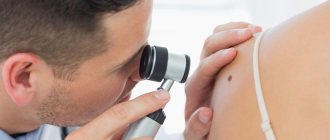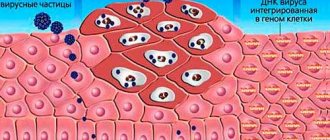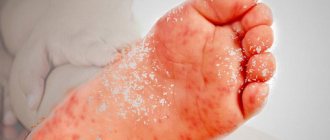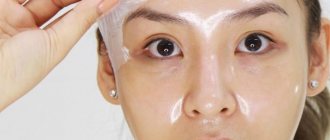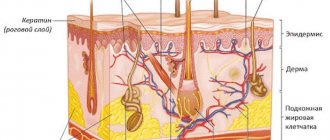Urticaria is a group of diseases (mainly of an allergic nature), the characteristic symptom of which is a rash on the skin in the form of red blisters.
In Russia, urticaria is very common - from 10 to 20% of the population have experienced its manifestations at least once in their lives. Moreover, in the majority it occurs in an acute form (70-75%), in the rest it takes a chronic course. WHO (World Health Organization) predicts that the 21st century will be the century of allergies. Every year the number of patients with one form of allergy or another increases by 5%.
A red spot appeared on the neck
If you notice unusual redness on your neck, you should consider visiting a qualified specialist to get an explanation of what this ailment is and how it can be cured.
The spots also vary in visual characteristics:
- Pigmentation:
- light;
- dark.
- Tactile sensations:
- smooth;
- rough;
- speakers.
- Additional symptoms:
- itchy;
- peel off;
- inflamed.
Depending on the set of visual manifestations, skin changes are classified into groups:
- Vascular in nature. They can range in color from pink to purple. Caused by disorders in the vascular system.
- Pigmentation. The spots range from white to brown. The cause is the absence of melanin or its overproduction.
- Artificial. They are the result of the introduction of a dye into the skin. This group includes tattoos and permanent makeup.
Not all stains fit exactly into the categories provided. Sometimes the appearance of spots can be caused by symptomatic manifestations of a specific disease.
In another article on our website you can see the types of red spots on the face.
In an adult
Redness in adults can be localized both over the entire surface of the body and in certain places.
Based on external signs, spots on the neck can be divided into several categories:
- Dry and weeping redness.
- Convex and not.
- With tactile contact there may be swollen and inflamed spots.
- Have clearly defined or blurred boundaries.
- Become covered with scaly growths or remain unchanged.
Most often, the appearance of redness in an adult is associated with disturbances in the functionality of body systems. Such signs indicate the presence of a serious disease that requires long-term therapy.
Photo
To visualize spots on the neck of an adult, use the provided photographic material.
Treatment of atopic dermatitis in children
There is no complete treatment for atopic dermatitis, that is, there are no methods of therapy that would lead to complete recovery (change the long-term prognosis of the disease). All existing methods of therapy change only the short-term prognosis - for the coming months.
However, treatment is necessary:
- to improve the quality of life of the child and family; for the prevention of secondary local complications (infections, skin atrophy, etc.);
- for the prevention of psychological problems (sleep disorders, depression, etc.).
Treatment is divided into lifestyle changes (eliminating triggers) and drug interventions (eliminating symptoms).
Change of life. What can parents do themselves?
Don't let your baby's skin become excessively dry, severe itching, and avoid triggers. Try following these simple tips:
- Children with atopic dermatitis should take short baths or shower with warm (not hot) water. Use mild, unscented soap or soap-free cleansers. Do not wipe, but pat your skin with a towel after washing. Immediately after bathing, apply moisturizer to your entire skin. Teenagers prefer to use unscented cosmetics and oil-free facial moisturizers.
- Consult your doctor; if your child has no contraindications, add oat decoction to the bath when bathing; it can reduce itching.
- Preference should be given to soft children's clothing made from breathable fabrics, such as cotton. Wool or polyester may be too harsh or irritating for atopic skin.
- Your child's nails should be trimmed regularly and short to prevent scratching of the skin. If your child scratches himself at night, try putting him to bed in comfortable, lightweight mittens or with the sleeves of his pajamas sewn up.
- Overheating of children should be avoided, as sweat can lead to exacerbations. This is especially true for Russian parents who are accustomed to hot temperatures in the apartment and wrapping their children up during walks.
- Children should be encouraged to drink plenty of water.
- Try to get rid of common allergens in and outside your home, such as pollen, mold and tobacco smoke.
- Stress can make atopic dermatitis worse. Help your child find ways to cope with stress (such as exercise, deep breathing, or talking to a counselor).
The child has
From time to time, redness occurs on the child’s skin. Sometimes the reasons for the appearance of such spots can be natural physiological processes, and at times the reaction of the child’s body to irritants or allergens.
The causes of redness on a child’s neck can be different:
- In the first weeks of life, it is quite possible that the spots represent acne. This is a hormonal change in the child’s body, which is also accompanied by a rash. This redness will go away after some time.
- Food allergies.
- Infectious pathogens can also be signaled by the appearance of red spots on the baby’s neck.
Quite often, redness on a child’s neck signals problems that need to be solved in a short period. Therefore, if spots are detected on the baby’s body, it is worth visiting a pediatrician and making sure that these formations are safe.
Photo
To understand what redness on a baby’s neck looks like, see the photo below.
Symptoms
It is quite easy to suspect an allergic reaction in yourself or your child. In addition to the presence of an allergic rash on the face, the following complaints are noted:
- Severe itching or burning;
- Dryness, flaking of the skin;
- Swelling of the eyelids, lips;
- lacrimation;
- Itching and redness of the eyes.
The rash itself may be in the form of red spots or blisters filled with transparent contents. Sometimes an allergic rash looks like small grouped dots that rise above the surface of the skin. If the rash appears after consuming any product, then symptoms may include nausea, vomiting, diarrhea, and abdominal pain1.
In what cases does the red spot on the neck itch?
In dermatology, spots are considered one of the types of rash, and the qualitative characteristics of the skin change:
- Relief.
- Density of formation.
- Coloring.
- Papule. An area of skin that is convex and dense to palpation.
- Blister. Pink itchy formation.
Several spots may appear on the neck at the same time, which are very similar in visual characteristics to each other.
Very often, redness can itch, which indicates the following pathologies:
- Disorders of the autonomic system. These spots appear after physical exertion or overheating of the skin. Such changes in the dermis are caused by a decrease in tone in the blood vessels.
- Allergic reactions of the body. Such redness can itch and be located not only in the neck area. To reduce stains, it is necessary to identify the allergen and eliminate its effect on the body.
- Photodermatoses. Radiation exposure can cause not only spots, but also swelling of the skin or a rash.
- Atopic dermatitis. Manifestations of this disease are observed in cold seasons, while in the summer these spots may disappear. Accompanied by itching, peeling and compaction on the dermis.
- Psoriasis. With this disease, large red spots may form. They may grow in size and become itchy. Treatment requires immediate contact with a medical facility.
- Children's infectious agents. They can spread throughout the body; cure requires a complete diagnosis of redness, regardless of its location.
Here we have already covered the question of how to behave if a spot on the skin itches.
Pink spots
The appearance of pink spots may be associated with atopic dermatitis, which is the result of contact with dust particles, chemicals or various products. An unstable psycho-emotional state is accompanied by the appearance of spots on the chest, neck, face, and arms.
Against the background of zhiber, the patient is bothered by pink spots localized in the back or hips. Activation of the disease is associated with a decrease in immune strength after illnesses of an infectious nature.
The appearance of ringworm is associated with damage to the skin and hair loss.
Only a dermatologist can make a diagnosis based on an external examination, assessment of color, size or shape. Based on the diagnostic results, the optimal treatment method is selected. If necessary, a consultation with specialists such as a venereologist or oncologist is scheduled.
In what cases does a red spot on the neck peel off?
If the redness that appears does not begin to itch, but only peels off, then most likely the reasons for the appearance of such spots will be:
- Pityriasis rosea. Formed due to weakened immunity. Initially, large redness forms on the body, which will be surrounded by additional spots along the borders. A distinctive sign of lichen is the appearance of a yellow lumen inside the spot.
- Tinea versicolor. Such redness is caused by a yeast-like fungus. In this case, spots of different colors appear. In addition to the neck, it can be localized on the back, chest or shoulders. Under sunlight, pigmentation may change.
- Allergy. To determine the causes of such symptoms, you need to remember what and when you ate. Then the pest product will not be left unattended.
You might be interested! Pemphigus in children: causes, symptoms and treatment
Causes of spots on the neck
There can be many reasons for the appearance of redness on the neck:
- Allergy. The spots can be localized on different parts of the body. Pets, cosmetics, and food products provoke the appearance of such a reaction in the body. The redness will disappear as soon as the allergen no longer affects the body.
- Insect bites. Red spots appear during periods of activity of mosquitoes, midges or other parasites. Such inflammations often resolve within a few hours.
- Hives. It appears as a consequence of an allergic reaction to an irritant. Usually localized on the skin in the form of large spots.
- Pityriasis rosea. Provoking factors are hypothermia of the skin or a hidden infection, or overheating. Usually the appearance of such spots is accompanied by malaise or fever. You can see a photo of pityriasis rosea in humans here.
- Stressful situations. After a nervous shock, a person develops red spots on the neck. They may appear on the chest, arms or face. The spots often disappear after the person calms down.
- Eczema. It is a serious autoimmune disease. Additional symptoms include itching and red spots of different locations. This pathology can be provoked by cosmetics, household chemicals, nervous shock or hormonal imbalance in the body.
- Psoriasis. A distinctive sign of this disease is the appearance of a white coating on the resulting red spot. The development of the disease is provoked by hormonal imbalance, decreased immunity, and genetic predisposition.
- Infectious pathogens. Such infections include rubella, measles, chickenpox or scarlet fever. To determine the etiology of the disease, it is enough to observe additional symptomatic manifestations.
- Sometimes the formation of red spots on the neck is caused by hemangioma. This is a benign formation on the surface of the skin. Such spots can appear both at birth and at different periods of life. Red spots caused by this pathology are easy to treat, so the main task is to diagnose them in time.
In any case, the presence of a spot on the neck already indicates the possible development of any of the pathologies described above.
Allergy
The most sensitive area to various irritants is the neck. This is where allergies most often occur. In this case, discomfort and unpleasant sensations are observed.
The development of such a reaction in the body can be provoked by:
- The use of synthetic products or chemicals that come into contact with the skin.
- Taking food additives or preservatives.
- Use of medications.
- The effect of viruses or infections on the body.
- Prolonged exposure to sweat.
- Wearing jewelry.
- Plant pollen.
- Animal fur.
Stress
The causes of redness in the neck area are:
- Increased nervous excitability.
- Strong feelings.
- Excitement.
Such signs are characteristic of impressionable and vulnerable people.
In order to eliminate this problem you can:
- Drink a cup of herbal tea before bed. Melissa and motherwort have soothing properties.
- Organize your daily routine.
- Reduce the stress on your body.
- Take walks in parks or squares more often.
- Lead a healthy lifestyle.
- Watch humorous programs or read similar literature.
- Strike a balance. Visiting a psychologist is normal practice in many countries. This specialist will make it clear that you are an ordinary person and have the right to make mistakes.
Autoimmune processes
The occurrence of redness is provoked by autoimmune processes in the human body. The most common is lupus erythematosus. Symptomatically, this disease manifests itself through the appearance of spots with clearly defined boundaries. Read more about the article on the topic of photos of lupus erythematosus and its treatment.
Complement redness:
- Weakness.
- Aching sensations in joints and muscles.
- The appearance of peeling.
- Increased sensitivity to light.
- Dysfunction of the nervous system.
Infectious diseases
Infections that can cause the appearance of red spots include the following pathologies:
- Chicken pox. Characterized by the appearance of red spots on the neck and more. Having had chickenpox once, the chance of contracting it again is very small. But reduced human immunity can provoke the reappearance of the disease. In this case, chickenpox will occur with even greater complications than in childhood.
- Rubella. In addition to the appearance of red spots, the disease can cause inflammation of the lymph nodes. In adults it occurs in a more complex form than in children. Having been ill once, the body produces antibodies that will protect against re-infection.
- Measles. Children are more often susceptible to this disease. In addition to the appearance of red spots on the neck, blisters may occur. Often the symptoms are complemented by:
- headache;
- increased temperature;
- conjunctivitis;
- dry cough;
- lethargy and malaise.
- Scarlet fever. Children are susceptible to this disease. Caused by streptococcus. Complications can only be avoided by taking a course of antibiotics. May be accompanied by:
- sore throat;
- intoxication of the body;
- high temperature.
Hemangioma
The formation of a benign tumor in the neck is characterized by:
- the spot resembles a mole;
- grows quickly;
- the skin loses sensitivity.
Treatment of photodermatosis
Contact a qualified specialist at the first manifestations of sun allergy; be careful with the use of traditional medicine, because delaying time and self-medication can lead to worsening of symptoms.
Due to the fact that the disease is provoked by internal disorders of the body, treatment should be aimed at overcoming both external consequences and chronic diseases and foci of infection.
To cope with the most unpleasant external manifestation - itching, the use of ointments and gels that contain skin-soothing, cooling, wound-healing components will help. Antihistamine drugs that do not have negative reactions to sunlight are usually used. The doctor may also, if necessary, prescribe the use of hormonal ointments, anti-inflammatory drugs, etc.
It is imperative to prescribe medications that help normalize metabolism, liver function, and skin cell renewal. In most cases, these are vitamins C, E and B, antioxidants, as well as nicotinic acid.
Timely intake, starting from mid-February - early March, of medications that improve metabolic processes, significantly increases tolerance to ultraviolet radiation and several times reduces the frequency of relapses or makes their clinical manifestations weaker. In addition, in some patients it is possible to achieve a 10-20-fold increase in resistance to sunlight when using phototherapy (repeated irradiation of the skin in gradually increasing doses).
Preventing sun allergies
Remember that rest should be moderately active; you should not burden your body by consuming unfamiliar, exotic food in large quantities, alcohol and tonic drinks - after all, all this is a huge stress for the whole body! And constant exposure to the open sun, despite the fact that the wave range in hot countries differs from what we are used to, can cause the development of solar allergies.
- In preparation for the “holiday” season, start with short sunbathing, gradually increasing the time spent in the open sun;
- It is advisable to avoid solar radiation between 10 and 14 hours - during the period of maximum radiation in the spectrum of 290-320 nm.
- Remember that near water, in strong winds, our skin receives several times more radiation;
- Try to alternate between being in the sun and in the shade;
- If you spend a long time in open areas, on the beach, you can use light capes, panama hats, hats, etc.;
- If you are predisposed to sun allergies, it is recommended to wear clothes made from natural fabrics that cover the body from direct exposure to ultraviolet radiation;
- Try to avoid taking medications that can cause sun allergies (consult your doctor);
- Use cosmetics with a sun filter, consult a cosmetologist or dermatologist which products are suitable for your skin type;
- Do not use cosmetics that are not intended for use in the sun;
- If possible, minimize the use of perfumes, aromatherapy oils and deodorants.
Remember that timely contact with a specialist will help you avoid or reduce the manifestations of solar urticaria.
Which doctor should I contact?
In some cases, the appearance of a red spot on the neck signals a rather serious illness. The diagnosis of such formations is carried out by a dermatologist.
Based on the examination and the following data obtained, a diagnosis is established:
- type of stain;
- pigmentation;
- dimensional characteristics;
- accompanying symptoms or scraping results.
The patient may be prescribed the following treatment:
- Treatment of a disease that causes red spots on the neck.
- In case of allergies, exclude the influence of the allergen and prescribe concomitant therapy.
- When treating lichen, an integrated approach is required. Such therapy includes oral medications and topical agents.
- The pigmented area is lightened using peelings and mesotherapy. Removal using laser is possible.
